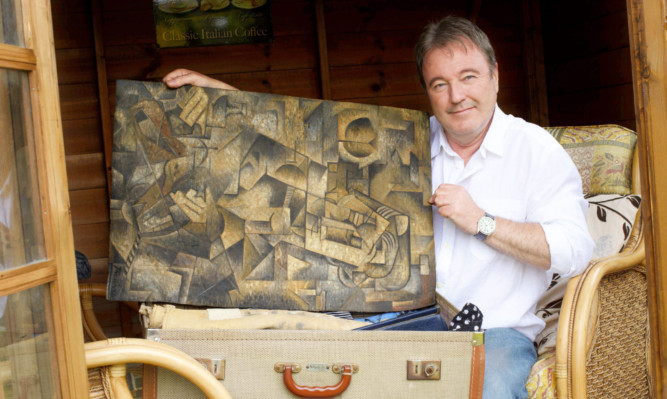A painting at the centre of a Picasso hoax which made headlines around the globe is up for sale in an online auction.
Artist Dominic Currie, who claimed to have found a work of art by the creator of cubism in his attic, is seeking bids on eBay for the imitation he painted himself.
Mr Currie, of Leven, copied the Spaniard’s signature on the painting which had lain in his garage for several years and invented an elaborate tale of how it had been given to his mother by a Russian soldier.
The story of an artwork potentially worth millions of pounds being found tucked in an old suitcase was reported by newspapers and media around the world.
When Mr Currie was rumbled by an art specialist just before he was due to show his find to Christie’s in London, he claimed the stunt was performance art and an experiment to highlight the media’s attitudes towards famous artists.
The ‘Attic Picasso’ is being sold through the account of his wife, Lynda.
The canvas is listed as “internationally recognised” and a “genuine fake Picasso”.
Yesterday evening bidding had reached £101 with nine days to go.
Mr Currie, 58, stood by his ruse and said “it had to be done” to highlight the plight of unknown, struggling artists and the media and public’s fascination with icons and big-name celebrities.
Inspired by the recent record price of £115 million for Picasso’s Women of Algiers, he said: “When I heard of it selling for a crazy amount of money I looked at my own painting.
“It had been lying in my garage for a while and I had it in mind to do something for struggling artists.
“I thought if it had ‘Picasso’ on it the media would go bananas, especially if it had some provenance, and that’s what happened.
“Is my painting any lesser than the Women of Algiers? No, but because it has no real history it’s chip paper.
“Artists are still struggling and no MP has come out and said ‘Dominic Currie has made a valid point. What are we doing to help struggling artists?’”
A description of the painting on eBay said it had caused a worldwide stir.
It also said it bears a remarkable likeness to Picasso’s 1910 portrait of Daniel-Henry Kahnweiler and is “probably the closest anyone outside of the Chicago Institute will ever be to possessing the real thing”.
It adds: “It is technically perfect in every detail and has the same monotones and brush strokes as the original Picasso in Chicago.”
A substantial donation from its sale is promised to local artists.
